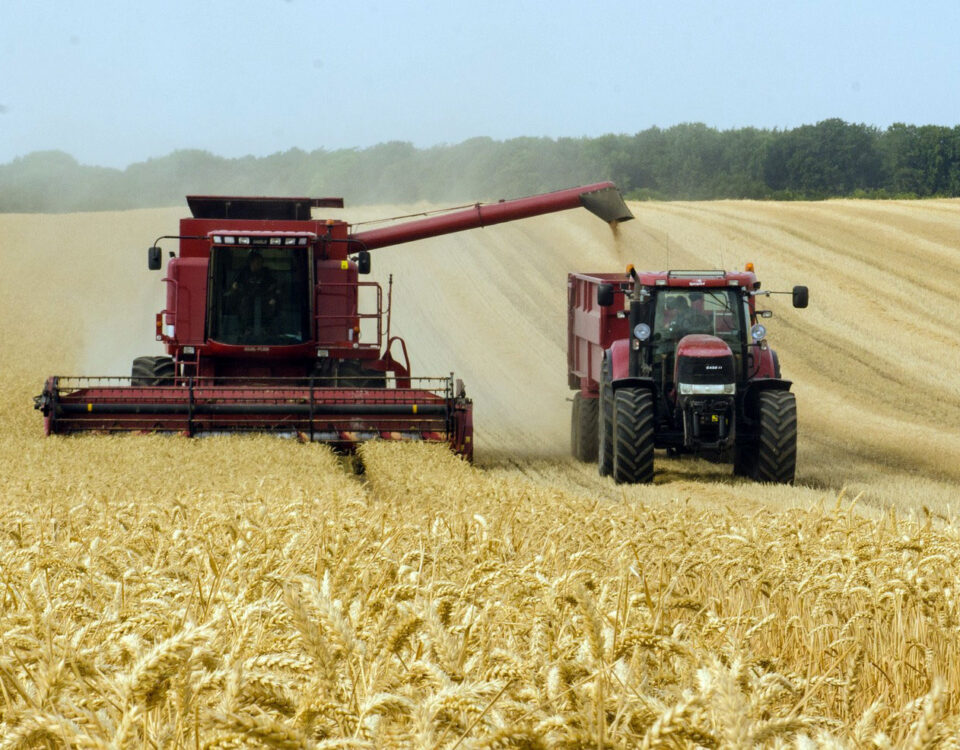Starter Fertilizer 8-25-0
Starter Fertilizer 8-25-0
 Starter Fertilizers
Starter Fertilizers
It was April 29th and 38° as I drove into work. By this time 20% of the corn has been planted in our county. It was cold and rainy. While the rain is welcome the cold is another story.
Cold soil temperatures have a direct impact on the availability of phosphorus in soil. The cooler the soil, the more phosphorus is tied up. This tie-up of phosphorus directly impacts the health of emerging seedlings. Tied up phosphorus in soil means the plant will likewise be deficient in phosphorus.
Phosphorus is the P in ATP. ATP is a critical component in the energy cycle of plants. When phosphorus is low in plant tissue plants grow slower, have reduced root mass, and are more susceptible to insect and disease pressure.
When seeds germinate and find a plentiful supply of available phosphorus, the emerging seedling will have a higher level of phosphorus in its tissue. By the time a corn plant reaches V2, its pattern of phosphorus sufficiency or insufficiency is mostly cemented in place. The goal is to set the health of the seedling with dry matter phosphorus readings of 0.35% or higher in the plant tissue.
Here are some guidelines for testing phosphorus: harvest the entire plant at V2 and submit for a plant tissue analysis.
% Phosphorus on Dry Matter Basis
0.15% Critically Deficient
0.25% Low
0.35% Sufficient
0.45% Excellent Level
Roots are the foundation of plant health. When soils are wet and cold, seedlings do not have aggressive root growth. At the same time soil phosphorus is virtually all tied up. With less root mass there is less uptake of phosphorus. To have healthy roots a seedling must have an adequate supply of phosphorus. This leads to the circular situation where seedlings need phosphorus to grow roots so they can get the phosphorus they need.
The solution to this predicament is to use a starter. The colder and wetter the soil, the more critical a starter becomes. Of course not all starters are equal so let’s explore some options.
Chemically, phosphorus is available in 2 forms: ortho and poly. Plants utilize phosphorus only in the ortho form, H2PO4. When 2 or more orthophosphate ions join together it becomes poly phosphate. Polyphosphate cannot be used by plants. First the phosphate ions must be detached by microbial digestion to become orthophosphate.
The problem with using polyphosphates as a starter is that cold, wet soils do not have enough microbial activity to convert the poly to ortho quick enough. To be healthy seedlings need to get out of the ground and to the V2 stage with at least 0.35% phosphorous.
This is why a starter needs to be 100% orthophosphate. Late planted corn that germinates in warm soil could probably get by with a 70:30 ortho/poly mix.
One word of caution when selecting a starter; just because a fertilizer is ortho does not mean it is your best choice. DAP or diammonium phosphate is 100% ortho phosphate. It is available as a fertilizer grade, 18-46-0, or the technical grade 21-53-0 that can be liquefied. This fertilizer will give off free ammonia that will harm the seed and burn seedling tissue. Urea can do the same thing. Do not put either of these with the seed.
International Ag Labs has a 100% orthophosphate starter with an analysis of 8-25-0. It also has 0.1% zinc and 0.1% manganese. We purposely do not have potassium in the starter to keep the salt index as low as possible.
This starter is available by the semi load or by 275 gallon totes from our warehouse. We also have live microbial inoculants and support packages that can be applied with the starter. Give us a call if you would like to talk. 507-236-1954.
Fertilizers
Sign up
Receive alerts on availability of products & price changes.
International Ag Labs
800 W. Lake Ave.
PO Box 788
Fairmont, Minnesota 56031
507-236-1954







